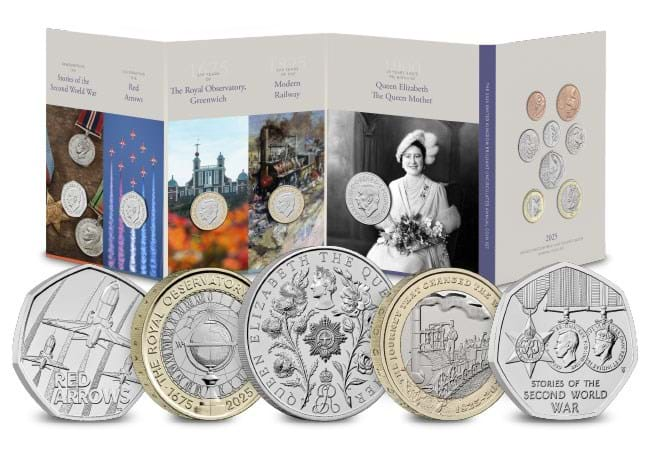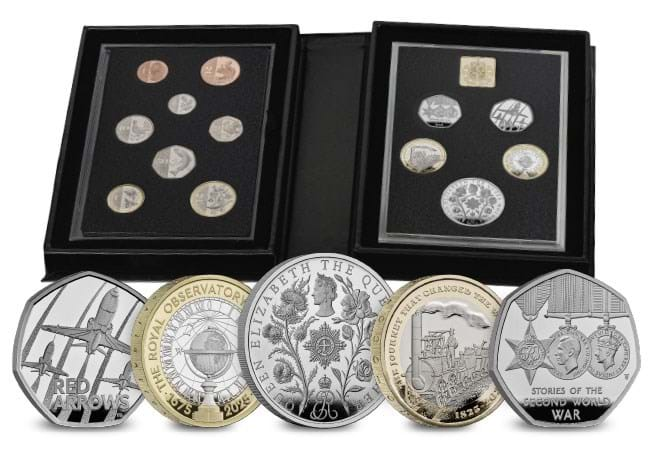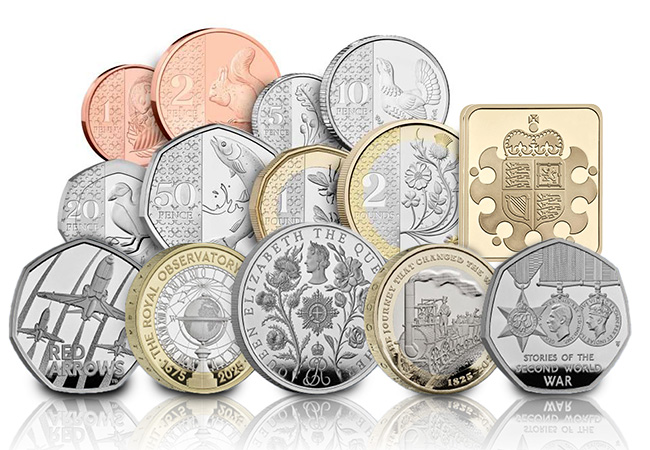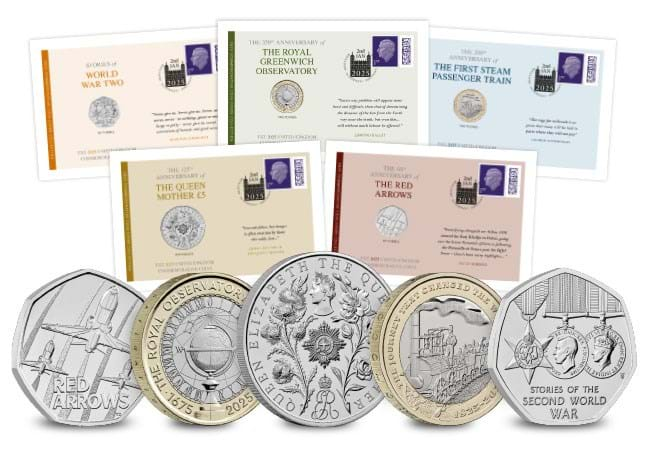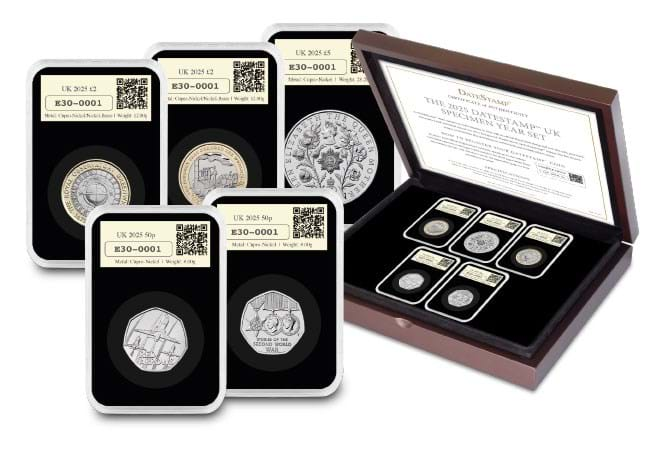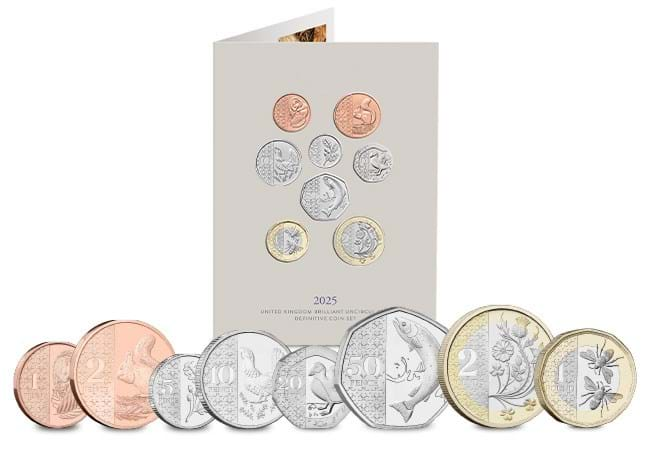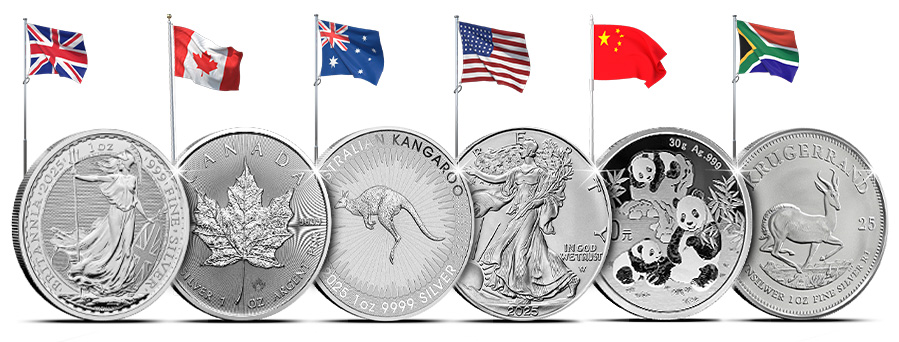2025 UK Annual Coin Sets: Available Now!

The start of a new year is always exciting, and what better way to celebrate 2025 than with the release of the brand-new UK Annual Coin Sets? Featuring stunning designs and commemorating key anniversaries, these sets are a must-have for collectors. With various options to suit every type of collector, let us be your guide to the best ways to own these important coins.
Official 2025 UK Annual Coin Set – Brilliant Uncirculated

This set brings together all the new 2025 definitive coins, from the £2 to the 1p, alongside five commemorative coins marking the years important anniversaries:
- The 350th anniversary of the Greenwich Observatory £2
- The 200th anniversary of the first Steam Passenger Train £2
- The 60th anniversary of the Red Arrows 50p
- 80 years since the end of World War II 50p
- The 125th birthday of the Queen Mother £5
Find out more information about each new commemorative coin by clicking here.
Each coin is struck to a Brilliant Uncirculated finish, free of blemishes and scratches. Presented in official Royal Mint packaging with detailed information about each coin, this set is available for just £75 (+p&p).
Official UK 2025 Proof Annual Coin Set

For those seeking the pinnacle of craftsmanship, the Proof Set is the ultimate choice. Limited to just 7,500 sets worldwide.
This set includes the same 13 coins as the Brilliant Uncirculated set, along with The Royal Mint’s Annual Medal—a special addition exclusive to this specification. Secure this exquisite set with an initial deposit of just £38 (+p&p).
The UK 2025 Annual Commemorative Coin Cover Collection

Celebrate 2025’s milestones with one of the most limited presentations of the UK’s 2025 commemorative coins. Each coin is featured within its own individual cover and postmarked on their release date—2nd January 2025. Limited to just 250 worldwide, this collection includes the five key commemorative coins of 2025:
- The 350th anniversary of the Greenwich Observatory £2
- The 200th anniversary of the first Steam Passenger Train £2
- The 60th anniversary of the Red Arrows 50p
- 80 years since the end of World War II 50p
- The 125th birthday of the Queen Mother £5
Find out more information about each new commemorative coin design by clicking here.
Each cover features a Royal Mail 1st Class stamp and is accompanied by a Certificate of Authenticity. Secure one from the tiny edition limit today with a deposit of just £25 (+p&p).
The UK 2025 DateStamp™ Specimen Year Set

This exclusive set is forever preserved in time, with each coin postmarked on the release date. Featuring only 1,495 sets worldwide, it includes:
- The 350th anniversary of the Greenwich Observatory £2
- The 200th anniversary of the first Steam Passenger Train £2
- The 60th anniversary of the Red Arrows 50p
- 80 years since the end of World War II 50p
- The 125th birthday of the Queen Mother £5
Find out more information about each new commemorative coin design by clicking here.
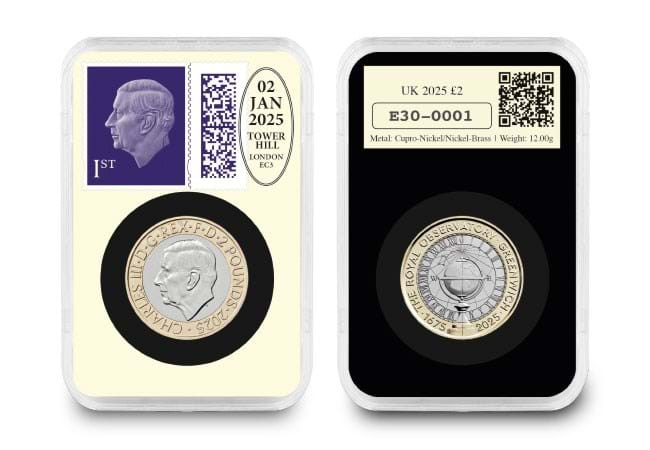
This collection of coins is forever set in time by the official Royal Mail postmark that signifies the coins’ first day of release – 2nd January 2025.
Act quickly to secure this iconic collection, starting at just £22 (+p&p).
The Official 2025 United Kingdom Brilliant Uncirculated Coinage Set

Celebrate the latest designs of King Charles III’s definitive coinage with this set, including the 1p to £2 coins in Brilliant Uncirculated quality. At just £39.50 (+p&p), it’s the perfect way to own these historic coins. By joining the Priority List, you can also secure future Definitive Coin Sets with ease.
Which Set is Right for You?
Whether you’re a seasoned collector or just beginning your journey, there’s a 2025 Annual Coin Set to suit your needs. From the stunning Proof Set to the accessible Brilliant Uncirculated presentation, each set offers a unique way to own a piece of 2025’s history. Act quickly to secure your choice before these limited editions sell out!
>>> View the entire range 2025 UK Annual Coin Sets by clicking here <<<
Discover the 2025 Annual Sets
As we welcome 2025, there’s no better way to mark the occasion than with The official brand new 2025 Annual Sets — a stunning collection of coins celebrating the people, places, and events that have shaped British history. Each coin captures a defining moment, bringing history to life in a way that feels more meaningful than ever at this time of year.
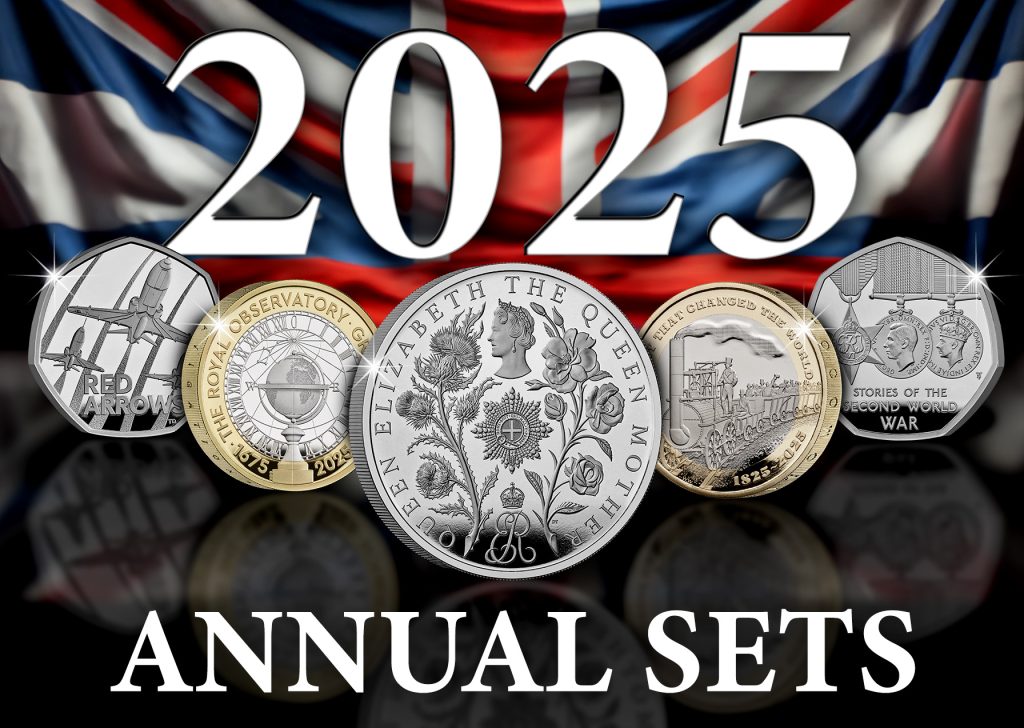
Available on 2nd January 2025
Here’s a closer look at the stories behind these commemorative coins:
Marking the Birth of Queen Elizabeth The Queen Mother
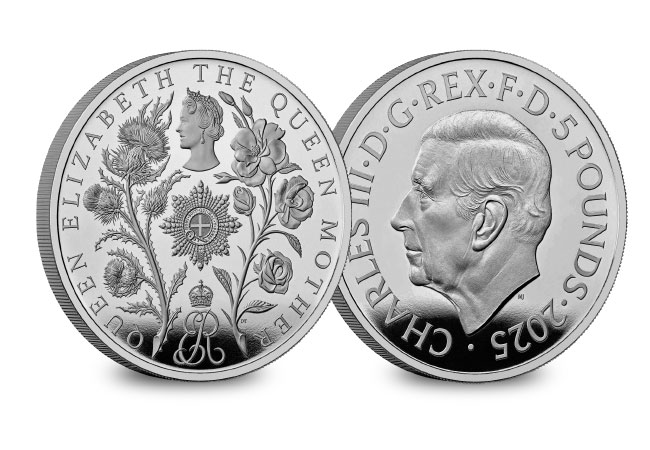
Queen Elizabeth The Queen Mother is celebrated for her steadfast resilience and unwavering support during some of the most challenging times in British history, including the Second World War. As a pillar of strength to her husband, George VI, and her daughter, Queen Elizabeth II, her influence spanned over a century. The £5 coin dedicated to her features a reverse design with a portrait that previously graced the coin celebrating her 80th birthday in 1980—a timeless tribute to her enduring legacy.
200 Years of the Modern Railway
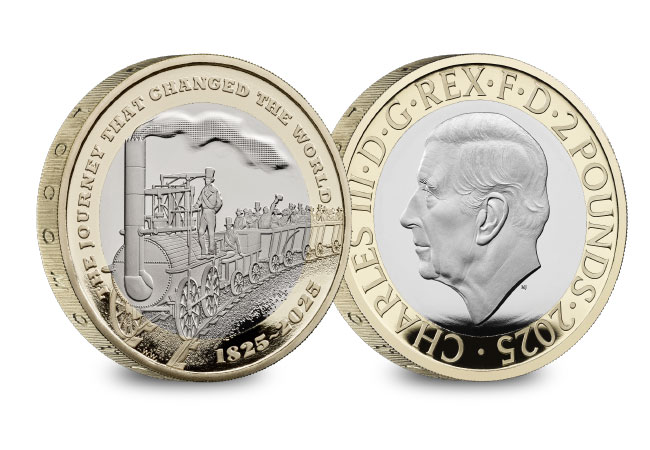
On 27 September 1825, George Stephenson’s Locomotion No. 1 revolutionised travel by transporting hundreds of passengers between Shildon, Darlington, and Stockton. This historic journey not only marked the dawn of the railway age but also transformed industries and cultures worldwide. The £2 coin commemorating this milestone captures the essence of that pivotal moment with a reverse design depicting Locomotion No. 1, paired with the edge inscription, “ACTIVE · LOCOMOTION NO 1.” This coin serves as a tribute to two centuries of innovation and progress in rail travel.
350 Years of The Royal Observatory, Greenwich
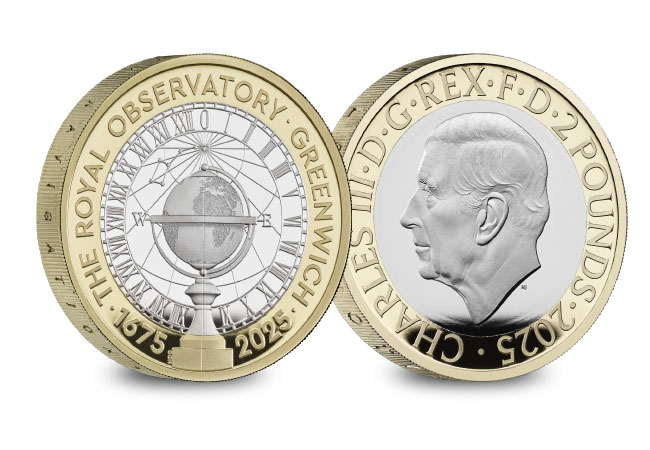
Founded in 1675 by Charles II, the Royal Observatory, Greenwich, has been a beacon of scientific progress, defining global navigation and timekeeping. The £2 coin commemorates its 350th anniversary with a reverse design that integrates the Shepherd Gate Clock, the constellation Ursa Minor, Polaris, and the iconic meridian line against a globe backdrop. Its edge inscription, “PERFECTING THE ART OF NAVIGATION,” underscores the Observatory’s enduring legacy.
Celebrating the Red Arrows
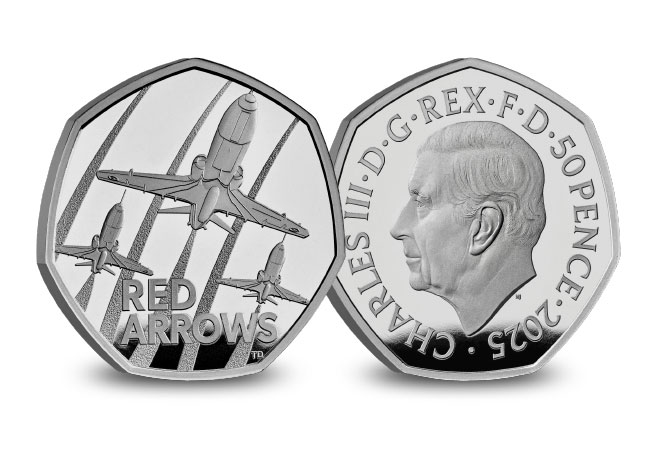
Since their inception in 1964, the Red Arrows have dazzled millions with their breath-taking aerobatic displays. Representing the precision and agility of the Royal Air Force, the team has performed nearly 5,000 displays across 57 countries. The 50p coin celebrating the Red Arrows features the sleek Hawk T1 aircraft, a tribute to the team’s inspiring legacy and their continued excellence in aviation.
Remembering the Stories of the Second World War
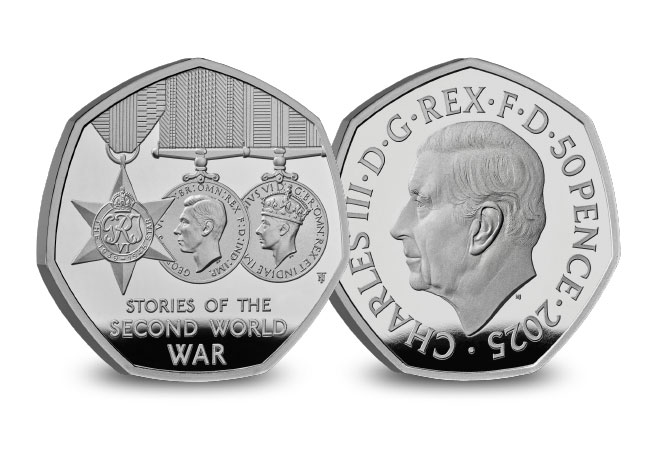
The Second World War was a defining chapter in British history, with contributions from soldiers, factory workers, and citizens alike. The 50p coin honours this collective effort with a reverse design showcasing the 1939–45 Star, Defence Medal, and War Medal—symbols of the bravery and resilience demonstrated during the war. Each medal tells a story of personal sacrifice and national unity that shaped the Britain we know today.
The Obverse: His Majesty King Charles III
Every coin in the 2025 Annual Sets bears the official coinage portrait of His Majesty King Charles III. Designed by Martin Jennings in 2022, this is the first definitive coinage portrait of
His Majesty The King to appear on coins, symbolising the continuity of the monarchy and the evolving story of the United Kingdom.
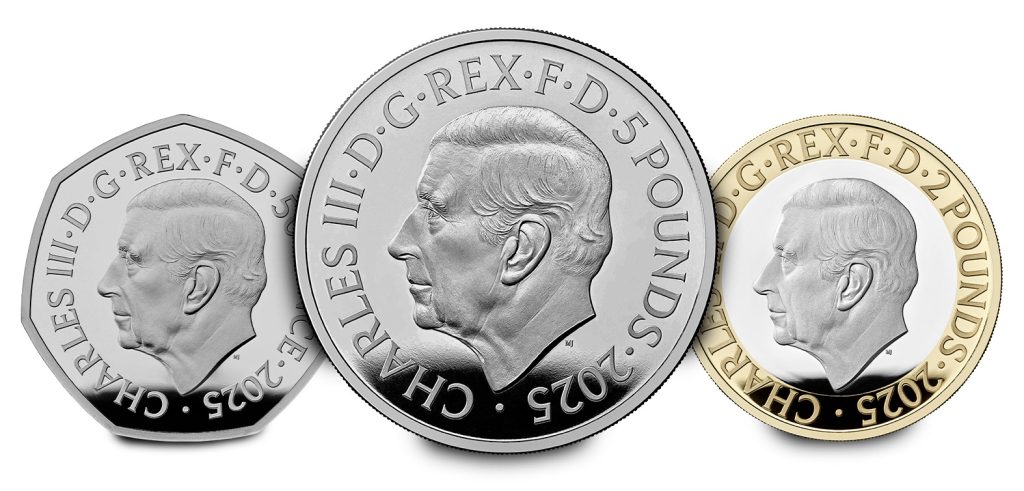
A Testament to British History and Craftsmanship
Each coin is meticulously crafted, embodying The Royal Mint’s dedication to excellence and storytelling. These sets not only celebrate the past but also inspire future generations to cherish and learn from Britain’s rich cultural heritage.
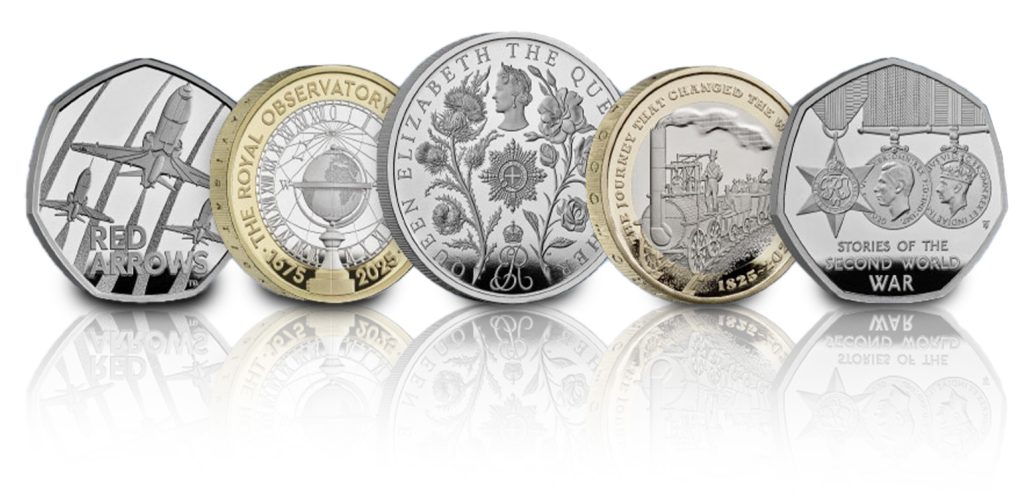
Available on 2nd January 2025
As stated by the Royal Mint
2025 Silver Flagship Coins of the World
The world of coin collecting is about to shine brighter than ever with the release of the 2025 Silver Flagship Coins of the World Collection. These iconic 1oz Silver Bullion coins represent the pinnacle of global minting excellence and offer collectors an exclusive opportunity to secure six of the most significant and sought-after coins of the year.
A Celebration of Silver Excellence
For centuries, silver coins have captured the imagination of collectors and investors alike. This new 2025 limited-edition set of six flagship coins, each represents the craftsmanship and heritage of the world’s leading mints.
From the historic South African Krugerrand to the charming Chinese Panda, this collection unites diverse designs and cultural icons, creating a truly global tribute to silver bullion.
The 2025 Collection: Coin by Coin
1. Britain’s Britannia
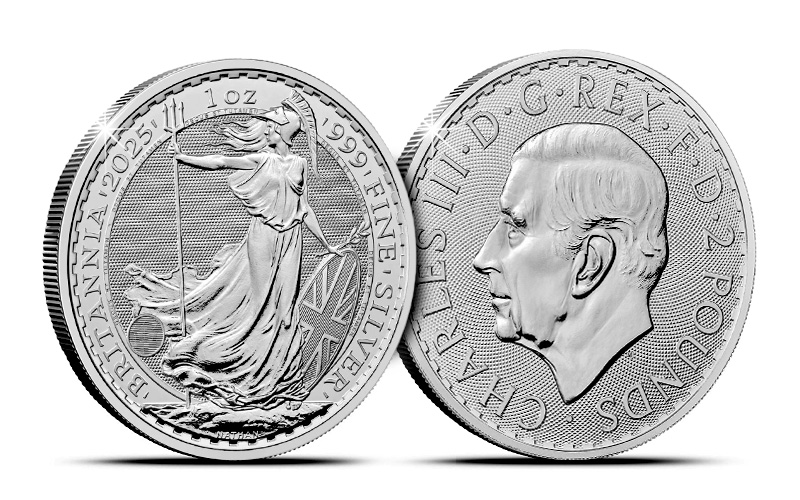
The Britannia stands as a symbol of British resilience and artistry. For 2025, it features the elegant depiction of Britannia on the reverse and the official portrait of King Charles III on the obverse, making it a must-have for collectors commemorating this new royal era.
2. FIRST King Charles III Canadian Maple Leaf
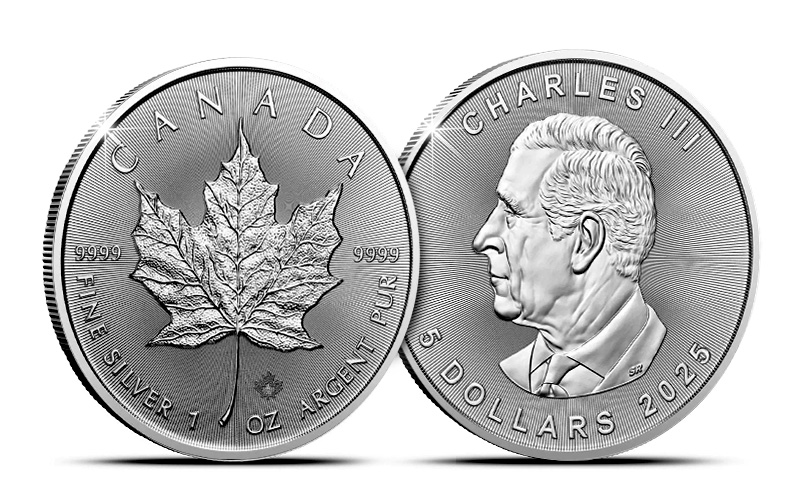
The Canadian Maple Leaf is renowned for its stunning design and intricate detailing. With the introduction of King Charles III’s portrait on the obverse for the first time, this coin gains historical significance, blending Canada’s strong ties to the British monarchy with its unique national identity.
3. FIRST King Charles III Australian Kangaroo
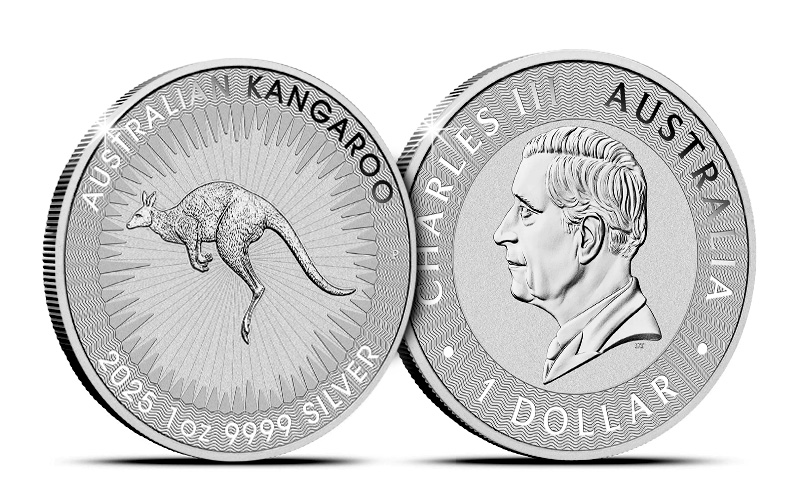
Australia’s beloved Kangaroo coin continues to leap forward in popularity. The 2025 edition features King Charles III on the obverse, marking its debut in this new era of numismatics. Its distinct design pays homage to Australia’s iconic wildlife.
4. American Eagle
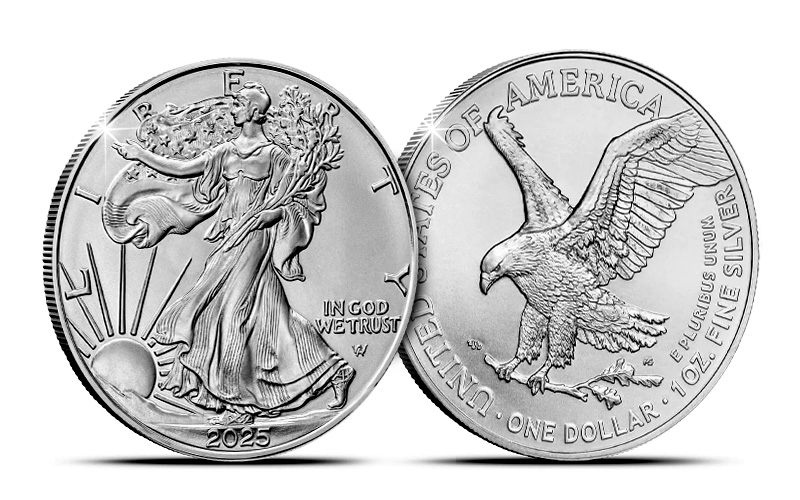
Often referred to as the most popular silver coin in the world, the American Eagle stands as the United States’ flagship bullion coin. The 2025 edition continues its legacy with the classic design that has captured the hearts of collectors worldwide.
5. Chinese Panda
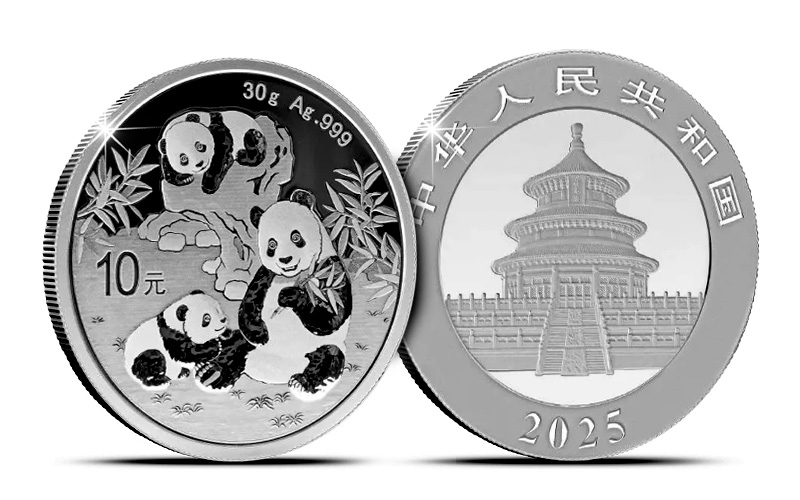
The Chinese Panda is celebrated for its ever-changing designs, making each year’s release unique. In 2025, the Panda continues to capture the charm and spirited nature of China’s national treasure, offering collectors a truly distinctive addition to their collection.
6. South African Krugerrand
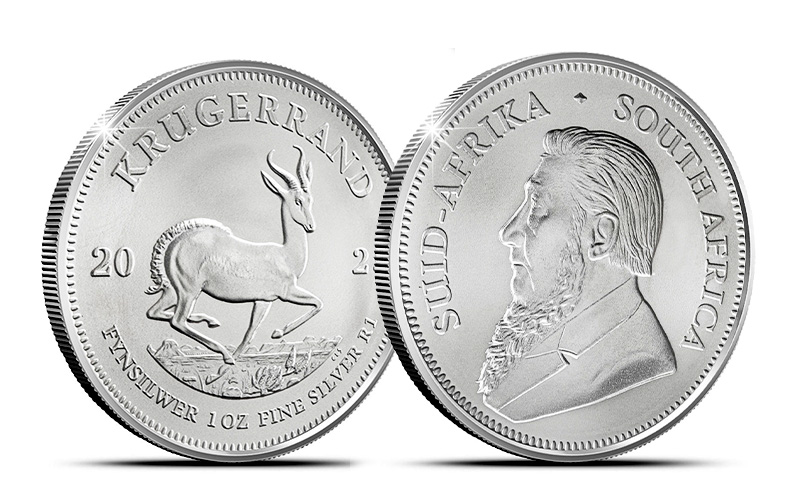
Introduced in silver in 2017, the Krugerrand has become an icon of South African numismatics. The 2025 edition maintains its reputation as a collector’s favorite, blending timeless design with global appeal.
Why Collectors Love the Silver Flagship Coins

Each coin in this collection tells a story of cultural pride and minting mastery. Together, they create a snapshot of the global numismatic landscape for 2025. With only a limited number of sets available, the 2025 Silver Flagship Coins of the World Collection offers an exclusive chance to own a piece of history.

